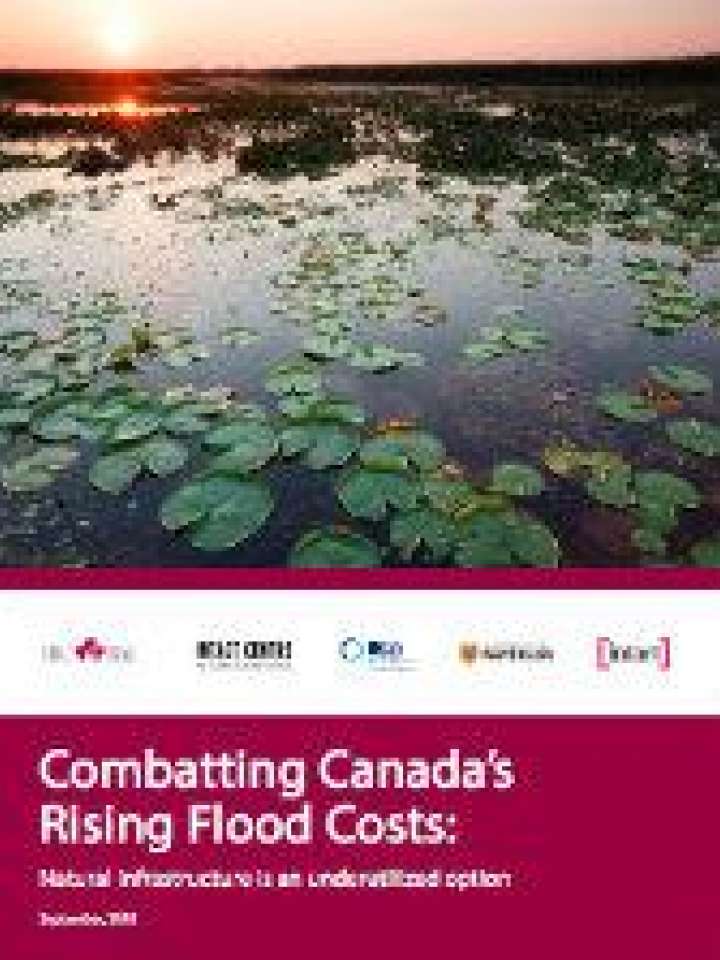Combatting Canada’s rising flood costs: Natural infrastructure is an underutilized option
This report demonstrates how to quantify the benefits and costs of natural infrastructure, such as ponds, wetlands and vegetated areas, as a strong complement or a viable alternative to grey infrastructure options for flood mitigation in Canada. As a general “rule of thumb”, in order of preference, the most cost-effective means to mitigate flood losses utilizing natural systems is to: (i) retain what you have; (ii) restore what you’ve lost; and (iii) build what you must.
This report presents ample evidence to suggest that efforts by governments to limit flood risk may be consistent with – and reinforce – their fiduciary responsibility to administer good governance. Flood risk is mounting across Canada from fluvial sources, such as rivers and lakes; pluvial sources, such as intense rainfall inundating urban environments; and coastal sources, such as storm surges compounded by rising sea levels. As this responsibility is likely to grow in response to increasing climate change and the associated extreme weather events, natural infrastructure merits consideration alongside grey infrastructure solutions as a means of limiting flood risk across all levels of government and all jurisdictions.
Beyond the specific methods needed to assess and compare grey infrastructure against natural infrastructure options relative to their utility to mitigate risk, a framework is required that would provide guidance to those considering or opting for a natural infrastructure solution. The natural infrastructure implementation framework that is being introduced provides such a structure, and it is consistent with the natural infrastructure preservation commitments Canada has made under the Paris Agreement, the United Nations’ Sendai Framework for Disaster Risk Reduction and the Pan-Canadian Framework on Clean Growth and Climate Change.
Explore further
